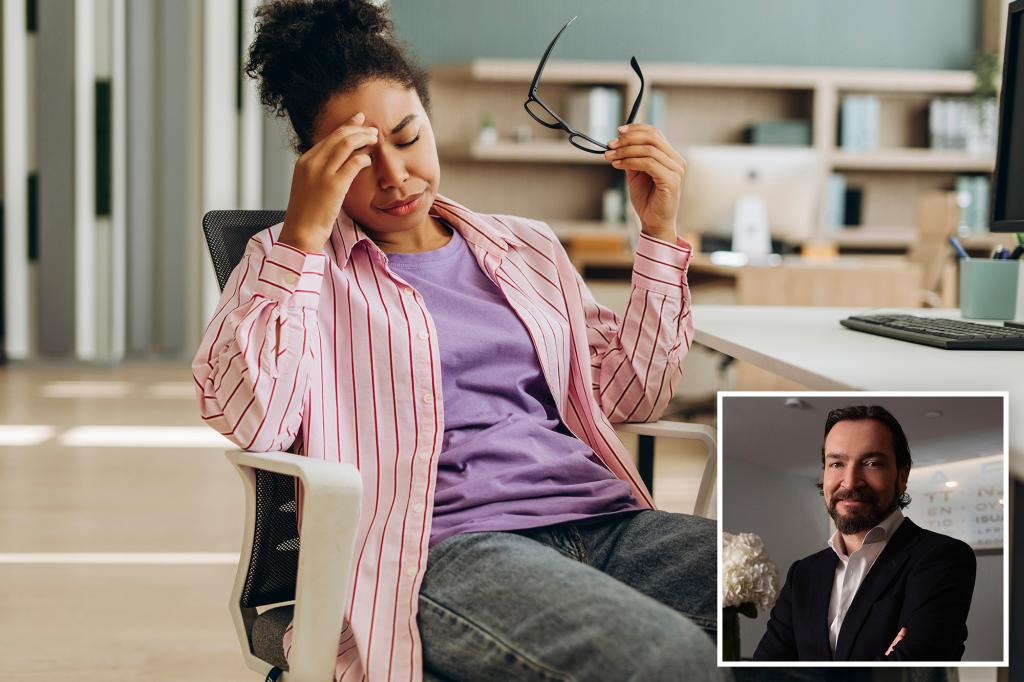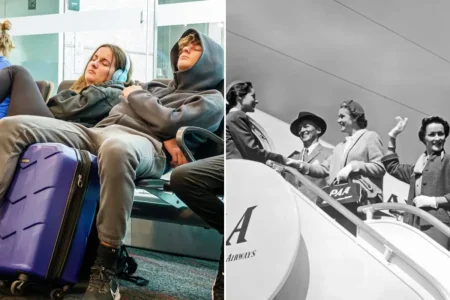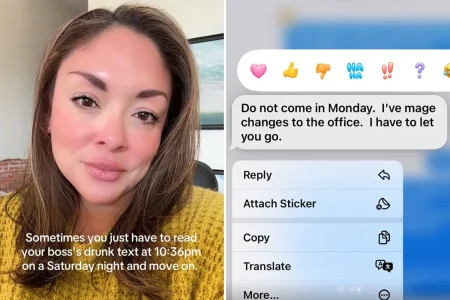Finding Balance in Our Digital Screen Relationship
In today’s hyper-connected world, many of us find ourselves in what might be called a “terrible glare-ationship” with our electronic devices. Computer vision syndrome, commonly known as digital eye strain, affects approximately 60-65% of Americans who experience various eye and vision-related problems from constant screen exposure. As we navigate this digital landscape, it’s crucial to understand which remedies actually work and which might just be trendy marketing. Dr. James Kelly, founder of Kelly Vision with offices in Manhattan and Long Island, offers valuable insights on this growing health concern, emphasizing that one particularly popular solution may not deliver on its promises. According to Dr. Kelly, a long-standing member of the American Academy of Ophthalmology, “There is essentially no serious scientific evidence that blue-light–filtering lenses meaningfully reduce eye strain or improve sleep.” This statement challenges a booming industry and invites us to explore more effective approaches to digital eye wellness.
Blue light glasses emerged in the 2000s and gained significant popularity during the COVID-19 pandemic when screen time skyrocketed for work, education, and entertainment. These specialized lenses are marketed to filter or block blue light emitted by digital screens, LED lighting, and fluorescent bulbs. While the global blue light glasses industry is projected to grow from $2.9 billion in 2024 to approximately $5.8 billion by 2034, scientific research has failed to substantiate their effectiveness in reducing computer-related eye strain, protecting retinal health, or improving sleep quality compared to conventional eyewear. It’s worth noting that while digital screens do emit blue light, the sun remains our primary exposure source. Dr. Kelly clarifies that there’s no conclusive evidence linking screen-based blue light to long-term eye damage or disease, though some research suggests it may disrupt sleep cycles by suppressing melatonin production. This distinction is important because it helps separate genuine health concerns from marketing claims that may exaggerate potential risks.
The true culprits behind digital eye strain form a complex web of factors beyond just blue light exposure. Extended screen time, diminished blinking (which we do less frequently when staring at screens), poor lighting conditions, uncorrected vision problems, tear film evaporation leading to dry eyes, screen glare, and improper workstation ergonomics all contribute significantly to discomfort. Understanding these multiple causes allows for a more comprehensive approach to prevention and relief. Dr. Kelly recommends implementing the widely-endorsed “20-20-20” rule: every 20 minutes, take a 20-second break to look at something 20 feet away. “This helps relax the eye muscles and reduce digital eye strain,” he explains, adding that conscious, frequent blinking during screen use is equally important. Keeping eyes properly hydrated with preservative-free artificial tears is another essential strategy, particularly in dry environments like air-conditioned offices, classrooms, or airplanes where tear evaporation accelerates.
Optimizing your physical workspace represents another critical component in combating digital eye strain. Dr. Kelly advises positioning your screen at arm’s length and slightly below eye level, increasing font size for comfortable reading, matching screen brightness to ambient room lighting, utilizing night mode features when available, and considering external monitors for laptop users to improve posture and viewing angles. “Proper screen positioning, the use of anti-glare filters and keeping screens clean and smudge-free can significantly reduce visual stress caused by glare and reflections,” he notes. Additionally, ensuring you have the correct vision prescription is fundamental, as even minor uncorrected refractive errors can substantially worsen symptoms. Computer-specific lenses with anti-reflective coatings often provide more relief than blue-light filtering alternatives. Another practical recommendation involves limiting screen exposure in the evening hours before bedtime. “Many of us are guilty of keeping our phones right next to the bed,” Dr. Kelly acknowledges, “but late-night screen use can interfere with melatonin production and disrupt sleep quality.”
Dr. Kelly’s personal eye care regimen offers a practical model for integrating these principles into daily life. During workdays, he incorporates frequent micro-breaks, enlarges text when needed, and maintains proper monitor positioning. He uses software reminders to encourage regular blinking during extended documentation sessions—a simple yet effective technique since we tend to blink less when concentrating on screens. For outdoor activities, he wears UV-blocking sunglasses, which, unlike blue-light glasses, have scientifically validated benefits for eye health. As evening approaches, he reduces screen brightness and activates night mode on his devices. His evening routine sometimes includes a warm compress and gentle eyelid hygiene to prevent and alleviate dry eyes. On days with heavy screen use, he supplements with preservative-free lubricating eye drops. Notably, he does not rely on blue-blocking lenses despite his profession and extensive screen use.
The digital age presents unique challenges to our visual system, which evolved in an environment vastly different from today’s screen-dominated landscape. While the market continues to promote blue-light glasses as a solution, the evidence suggests our focus should be elsewhere. “Bottom line for readers, for most people, blue-light glasses are optional,” Dr. Kelly concludes. “The biggest wins are smart screen habits, a healthy tear film and the right prescription.” This practical advice underscores that maintaining eye health in our digital world isn’t about purchasing trendy products but adopting mindful habits that respect our visual system’s natural functioning. By implementing these evidence-based strategies—regular breaks, proper hydration, optimal workstation setup, appropriate vision correction, and mindful screen usage—we can transform our problematic “glare-ationships” with our devices into healthier, more sustainable interactions that protect our vision for the long term.















